Xi'an
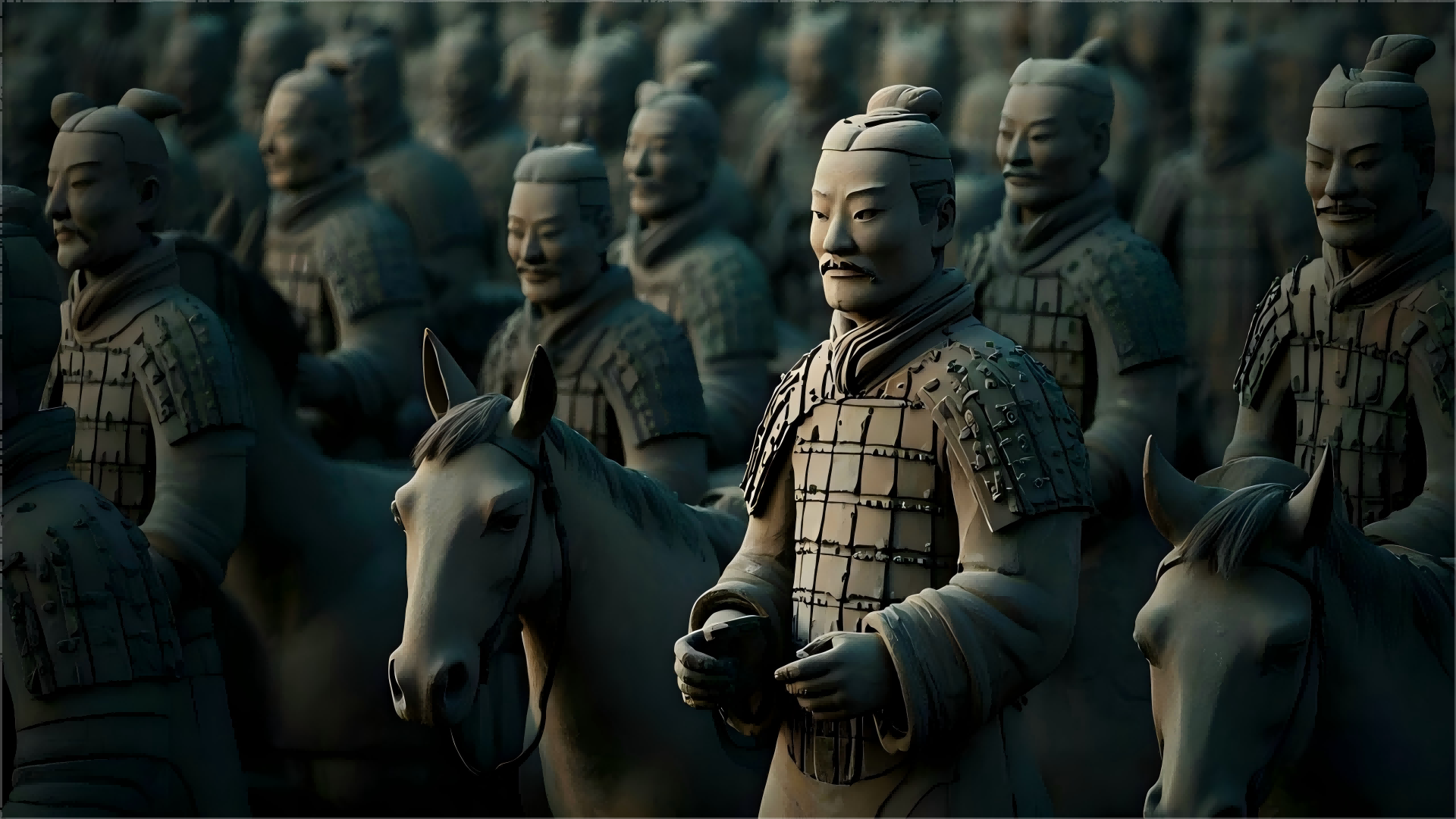
"Xi'an, known as Chang'an in ancient times, is one of the four major ancient capitals of China, with a profound historical background and rich cultural heritage. The Terracotta Warriors and Horses and the Ancient City Wall have witnessed a thousand years of winds and clouds, highlighting the charm of Chinese civilization. As the ancient capital of thirteen dynasties, the historical relics are scattered everywhere, making visitors feel as if traveling through time and space. Nowadays, Xi'an is not only a city of culture, but also a city of innovation. There are many universities and research institutes, and the vigor of innovation is bursting. The cuisine is unique, with mouth-watering meat buns and mutton buns. The city's blend of ancient and modern, tradition and modernity, both ancient and modern, attracts tourists from all over the world to experience its unique charm."
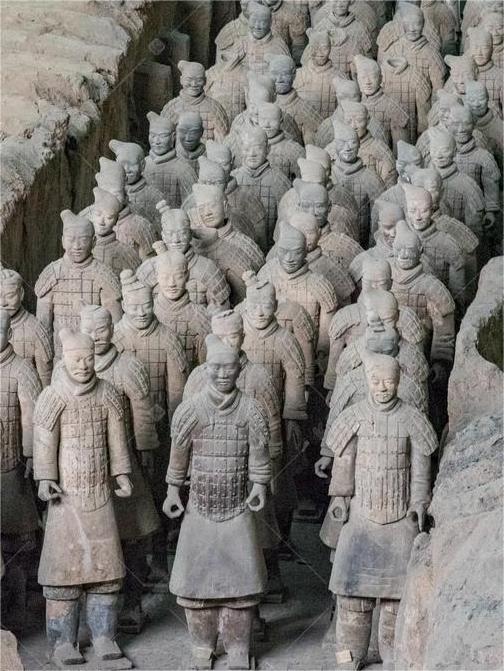
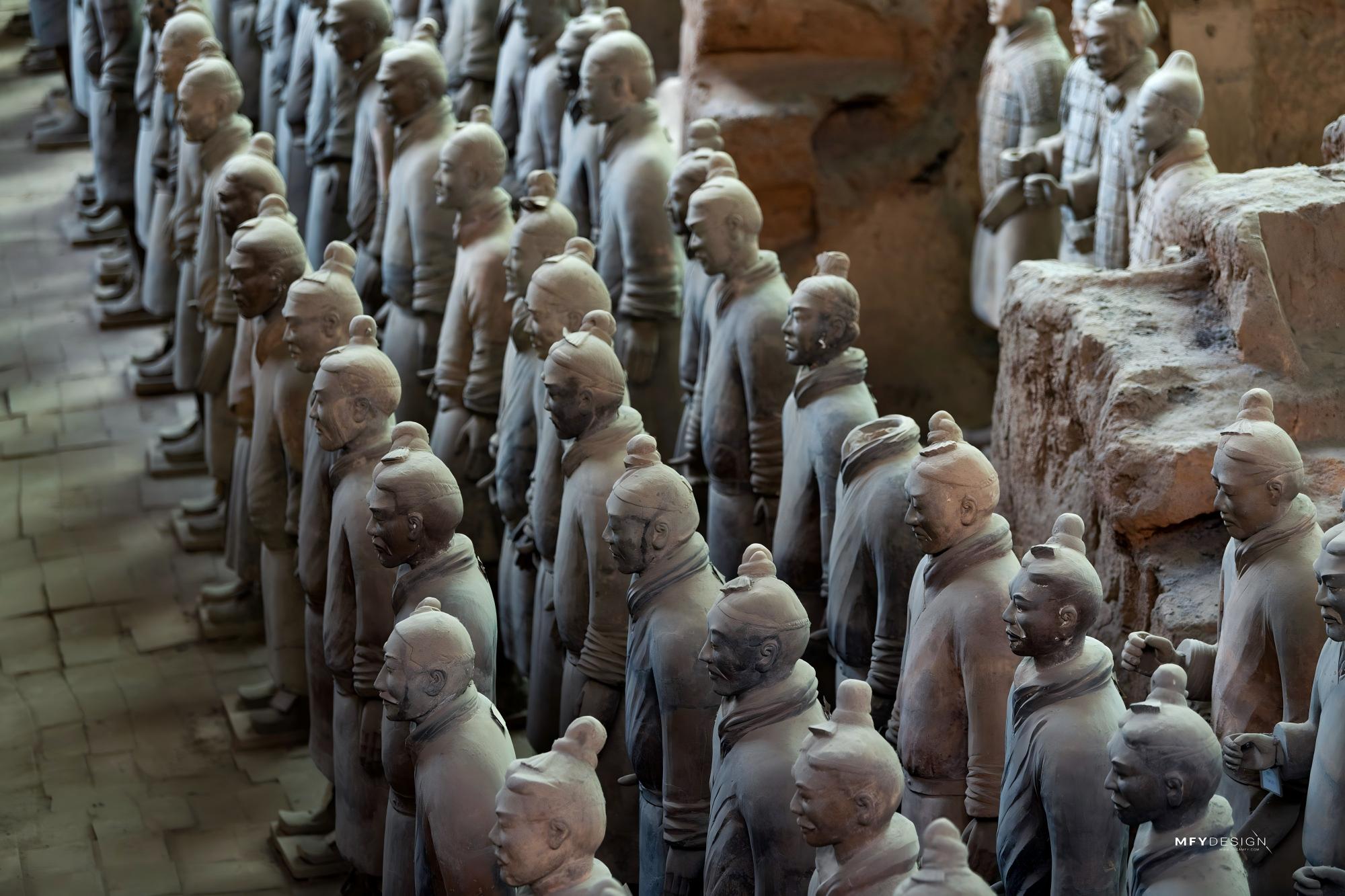
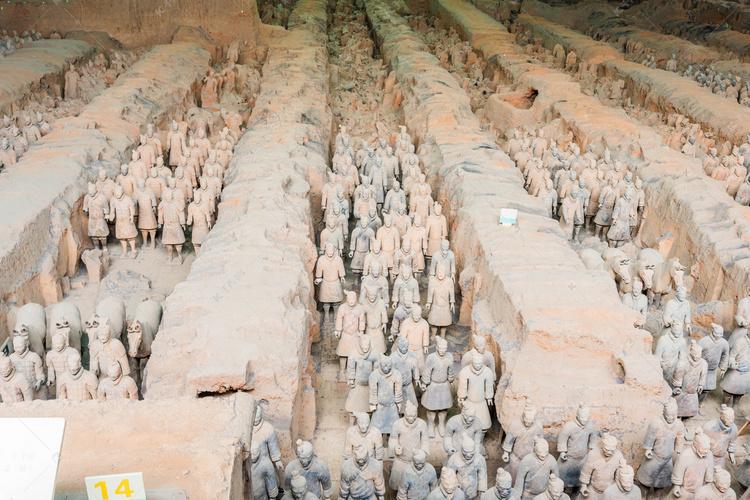
Top1.Emperor Qin Shi Huang's Mausoleum Site Museum (Terracotta Army)
The Museum of Terracotta Army of Emperor Qin Shi Huang is also known as the Terracotta Army or the Qin Terracotta Army. It is a burial pit of Emperor Qin Shi Huang's mausoleum and, together with the Mausoleum of Emperor Qin Shi Huang, forms the Museum of the Mausoleum of the First Qin Emperor. The Terracotta Army of Emperor Qin Shi Huang is known as the Eighth Wonder of the World. More than a thousand terracotta soldiers unearthed here have different images and vivid expressions. They are a bright pearl in the history of ancient Chinese sculpture art and are hailed as "one of the great archaeological discoveries of the 20th century." ### Historical Background Emperor Qin Shi Huang began to build his mausoleum as soon as he ascended the throne at the age of 13. Nearly 720,000 people were involved in the project, and the construction lasted for 38 years, making it a huge project. The mausoleum was not completed until Emperor Qin Shi Huang's death, and his second - son, Emperor Qin Er Shi Hu Hai, continued the construction for more than a year to finish it. It is rumored that Emperor Qin Shi Huang spent countless manpower, material resources and financial resources to build an underground palace for himself, and the Terracotta Army was the guards of the underground palace. The Qin Terracotta Army is a typical example of using figurines to replace human sacrifices. The reason why the Qin Terracotta Army reached such a high level in terms of scale and realism is not only due to the wisdom of the craftsmen but also inseparable from the will of this emperor. In March 1974, some peasants in Xiyang Village, Lintong District, Shaanxi Province accidentally discovered some fragments of terracotta figures while digging a well. After more than a year of exploration and trial excavation by archaeologists, it was confirmed to be a large - scale figurine pit, which is the world - famous No.1 Terracotta Army Pit. In April and May 1976, No.2 and No.3 Terracotta Army Pits were discovered on both sides of the No.1 Pit. Each pit differs in size, shape and unearthed artifacts. Some scholars believe that the No.3 Pit is the command post for the No.1 and No.2 Terracotta Army Pits, which was called "military tent" in ancient times. The Museum of Terracotta Army of Emperor Qin Shi Huang, built on the site of the Qin Terracotta Army burial pits, officially opened in 1979. The main attractions include the No.1, No.2 and No.3 Terracotta Army Pits, the Bronze Chariot and Horse Exhibition Hall and related temporary exhibitions. ### Visiting Guide The museum ticket allows visitors to access three Terracotta Army Pits including the No.1 Pit, the unearthed cultural relics exhibition hall, the Bronze Chariot and Horse Exhibition Hall and the Mausoleum of Emperor Qin Shi Huang. The terracotta warriors unearthed here can be divided into general figurines, warrior figurines, charioteer figurines, etc., according to their costumes, expressions and hairstyles. Each terracotta figure has a different face, hairstyle, body and expression. The terracotta figures and horses were originally painted, but most of the paint has peeled off and changed color due to later fires and soaking. The No.1 Pit in the No.1 Pit Scenic Area was excavated earlier. The pit is about 230 meters long from east to west and about 62 meters wide from north to south. According to the arrangement density of the unearthed terracotta figures and horses in the trial excavation, there are about 6,000 terracotta figures and horses buried in the No.1 Terracotta Army Pit, along with a large number of bronze weapons. The No.1 Pit is also the most spectacular exhibition hall currently. You can see a huge army of terracotta soldiers standing in the pit, with various postures. It is said that there are more than 30 kinds of beard styles alone. Upon closer inspection, each soldier is lifelike, from the armor to the expression, from the weapon to the lines on the palm, all of which are amazing. ### The No.2 and No.3 Pits The No.2 and No.3 Pits are located on both sides of the No.1 Pit. Like the No.1 Pit, there are nearly 2,000 terracotta figures and horses, similar in size to real people and horses. There are different military branches such as chariot soldiers, cavalry and infantry, arranged neatly. Although it is not as shocking as the No.1 Pit, since each pit has different formations and functions, they are also worth visiting. The terracotta warriors were created based on real - life experiences, with delicate artistic techniques. The terracotta figures have different costumes and expressions, showing distinct personalities and strong characteristics of the era. The bronze weapons unearthed in the pits include swords, pi halberds, spears, ge halberds, ji halberds, shu staves, crossbow mechanisms and a large number of arrowheads. Most of the weapons are still sharp after more than two thousand years, indicating that there was already a high - level metallurgical technology at that time. ### Travel Tips The Museum of Terracotta Army of Emperor Qin Shi Huang is always crowded with tourists. You can avoid the peak hours and start your visit from the No.3 Pit. After the visit, tourists can take the scenic area shuttle bus to the Mausoleum of Emperor Qin Shi Huang.
- Historical culture
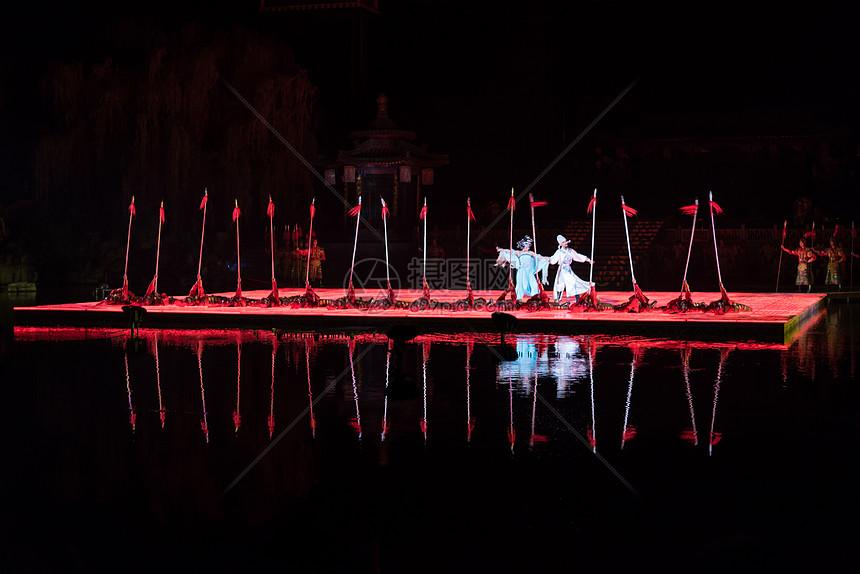
Top2.The performance of "Song of Everlasting Sorrow"
The large-scale landscape historical dance drama "Song of Everlasting Sorrow" is adapted from the narrative poem of the same name by Bai Juyi. More than 300 professional actors in gorgeous Tang-style costumes perform in it, using dance to present the classic episodes described in the poem: During the prosperous Tang Dynasty, Emperor Ming of Tang summoned Yang Yuhuan into the palace and doted on her deeply. After An Lushan's rebellion, Yang Yuhuan was forced to death at Mawei Slope. Emperor Ming was heartbroken and finally his soul ascended to the sky, where he met his beloved concubine in the Moon Palace. Venue: Reenacting History in Huaqing Palace The performance of "Song of Everlasting Sorrow" is held within the Huaqing Palace scenic area. As the sky gradually darkens, the stage rises from the water and a magpie bridge is set up in the air. The dreamy scene makes people feel as if they have traveled back to the Tang Dynasty. Stage Design: Creating Emotions with Technology and Scenery The lighting and scenery of the performance are also amazing. Elements such as the pavilions and the lake in Huaqing Palace are skillfully integrated into the drama. Along with the music, spray splashes on the lake and a sea of fire burns. Behind the stage, the lighting outlines the silhouette of Lishan Mountain, and the dotted lights are like stars falling on the mountain.
- Historical culture
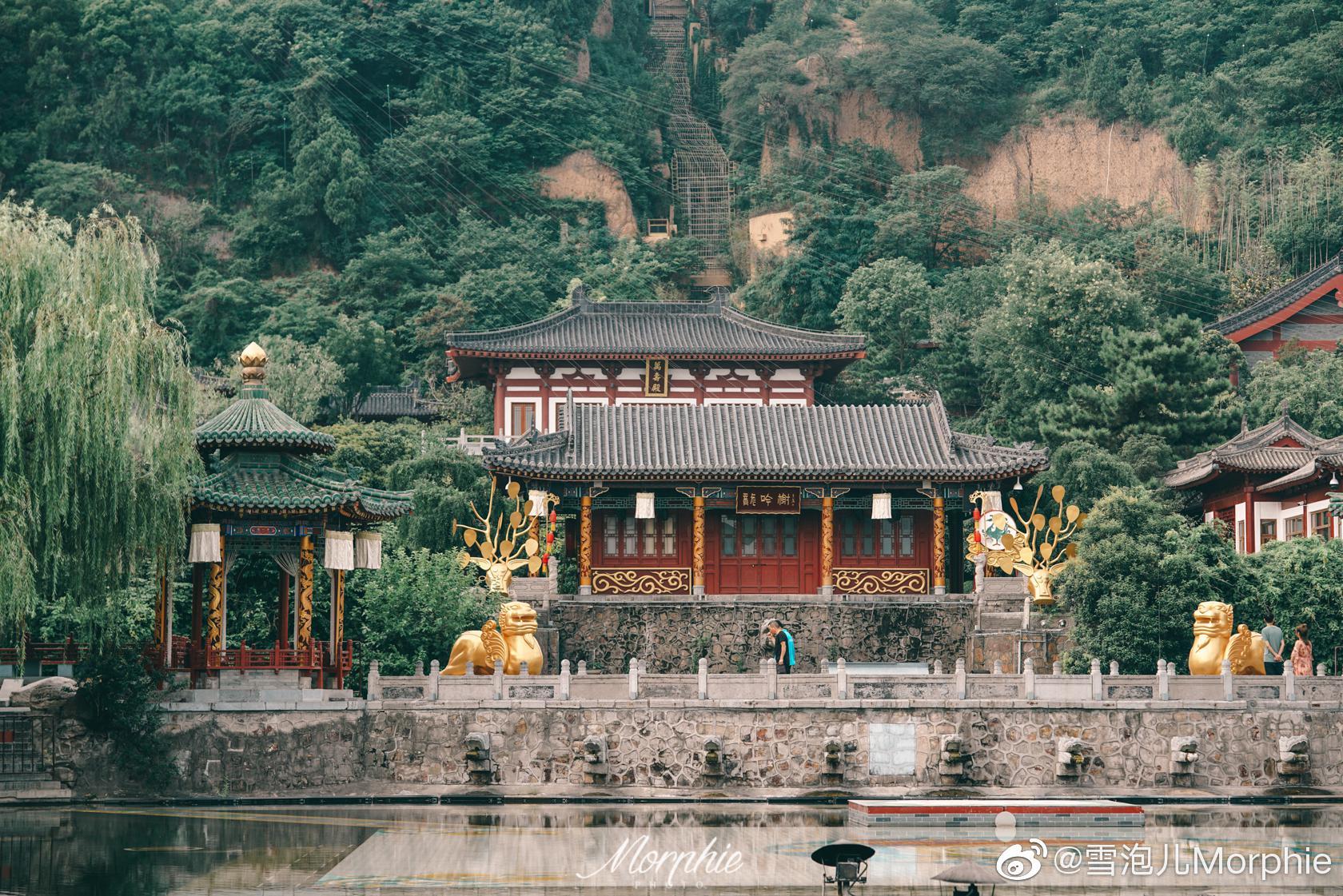
Top3.Huaqing Palace
Huaqing Palace (Huaqing Pool • Lishan Mountain) Scenic Area is located 30 kilometers east of Xi'an and is adjacent to the Terracotta Army. Renowned at home and abroad for its timeless hot - spring resources and numerous historical events, it has become a landmark scenic area for the cultural tourism of the Tang Dynasty palaces in China. ### Attractions in the Palace Huaqing Palace has a long history. Emperors of the Zhou, Qin, Han, Sui, and Tang dynasties built summer palaces here. Inside the palace, there are cultural areas such as the Tang Imperial Bath Site Museum, the site of the Xi'an Incident - Five - Room Hall, the Jiulong Lake and Furong Lake Scenic Areas, and the Tang Liyuan Site Museum, as well as landmark building complexes like Feishuang Hall, Wanshou Hall, Changsheng Hall, Huanyuan, and Yuwang Hall. ### The "Ode to the Hot Spring" Stele The Lishan Hot Spring has been developed and utilized early and has been favored by emperors of all dynasties, enjoying the reputation of "the No.1 Imperial Spring under the Heaven". As early as 6000 years ago during the Yangshao Culture period, the ancestors of Jiangzhai began to use the Lishan Hot Spring. The long - standing Lishan Hot Spring embodies rich cultural connotations and is an indispensable part of the Chinese national historical culture. The "Ode to the Hot Spring" stele in the scenic area is 154 centimeters high, 72 centimeters wide, and 19 centimeters thick, with a coiled - dragon and chi - shaped head and a trapezoidal pedestal. It was engraved by Yuan Chang, the governor of Yongzhou in the Northern Wei Dynasty. The inscriptions on the stele read: "The hot spring is a natural prescription and the prime healer of heaven and earth. People from all over the world, whether they are suffering from illnesses or not, all come here with provisions to relieve their pain in the water." This stele is the earliest written physical material extant in Huaqing Palace. ### Tang Imperial Bath Site Museum This is the location of the bath described in "Song of Everlasting Sorrow" where Yang Guifei emerged from the bath. After the An Lushan Rebellion, few of the original buildings remained. In 1982, when the Lintong County Government was building the "Guifei Pavilion", they accidentally discovered the Tang - Dynasty bath site. After excavation and arrangement, the Tang Huaqing Palace Imperial Bath Site Museum was established. This bath is small and exquisitely designed, about 3.6 meters long from east to west and 2.9 meters wide from north to south, approximately in an elliptical shape. The pool wall is entirely built of blue stones. The two - layer terrace - like structure of the bath is made up of 18 groups of rolled stones. There is a long strip of stone in the pool for Yang Guifei's exclusive use during her bath, engraved with the pattern of the character "Yang". There is a water inlet with a diameter of 10 centimeters in the middle of the pool bottom. A white - jade carved lotus base was unearthed here. The base is connected to a nozzle above and a pottery water pipe below, which is connected to the main water source. The hot - spring water spurts out from the lotus - shaped nozzle through the pipe due to natural pressure, and the falling water mist is similar to today's shower. Adjacent to the east of the Guifei Pool is the imperial bath exclusively for Emperor Xuanzong of the Tang Dynasty. In the Tang Dynasty, a Nine - Dragon Hall was built above the pool, and there were nine white - jade carved dragons outside the hall, spouting spring water from their mouths. This bath is in the shape of a realistic lotus flower in plan, so it is also known as the "Lotus Bath". ### The Site of the Xi'an Incident The Five - Room Hall in Huaqing Palace is the place where the Xi'an Incident took place. Even today, the bullet marks from the fierce battle during the military remonstrance still remain on the glass windows and walls of the Five - Room Hall. The desks, chairs, beds, sofas, tea sets, stoves, carpets, telephones, etc. used in each room's office are all replicated and placed in their original positions. ### Historical Events #### The King of Zhou Teased the Vassal States with Beacon Fires In 779 BC, King You of the Zhou Dynasty got a beautiful woman named Bao Si, but the beauty never smiled. For this reason, King You discussed a plan with the treacherous official Guo Shifu and lit the wolf - smoke on the beacon tower on Lishan Mountain. When the vassal states across the country saw the beacon fires, they quickly led their troops to rescue the king. However, King You told the vassal states, "I lit the beacon fires just to make the queen smile." Then Bao Si laughed. The vassal states came bravely but left resentfully. The Quanrong State saw that King You was fatuous and the people were disheartened, so they took the opportunity to lead their troops to attack. When the enemy troops reached the foot of the mountain, King You urgently lit the beacon fires to call for help, but none of the vassal states came to rescue. King You fled to Lishan Mountain with Bao Si and was killed by the Quanrong. This left historical allusions such as "A smile is worth a thousand gold", "A smile led to the loss of the world", and "The King of Zhou Teased the Vassal States with Beacon Fires". And this beacon tower stands on the first peak of the West Xiuling Ridge of Lishan Mountain at an altitude of 913.6 meters. #### Su Dongpo Composed Poems on Lishan Mountain During the Jiayou reign of the Northern Song Dynasty, after painstaking renovation by Liu Ziyong and others, the Lishan Hot Spring was extremely beautiful, attracting tourists from all over the country to gather here, compose poems, and express their feelings and nostalgia for the past. Among these countless poems and beautiful verses, the masterpieces such as "Night Tour of Lady Guo" and "Lishan Mountain" written by Su Shi, a rising star in the literary world, when he visited Lishan Mountain, stood out. #### The Xi'an Incident The Xi'an Incident, also known as the "Double Twelfth Incident", was a mutiny launched by Zhang Xueliang and Yang Hucheng at Huaqing Pool, detaining the then - Chairman of the Military Affairs Commission of the Nationalist Government. ### Tour Guide You can watch large - scale dance dramas in the scenic area. The scenic area launched the large - scale real - scene historical dance drama "Song of Everlasting Sorrow" in 2007 and the multimedia video drama "Mysterious Changsheng Hall" in 2012. Among them, "Song of Everlasting Sorrow" is only performed from April to October. The ticket prices for ordinary seats range from 200 to 300 yuan depending on the area. There is also "The Xi'an Incident on December 12th" adapted from historical events, which vividly and realistically shows the little - known historical truth of the "Xi'an Incident". If you want to try soaking in the hot spring here, you can check in at the hotels in Huaqing Palace, which provide natural Lishan hot - spring water for guests to enjoy.
- Historical culture

Top4.Xi'an City Wall
The Xi'an City Wall is a landmark landscape in the ancient capital of Xi'an and one of the most well - preserved ancient city walls in China to date. With a total length of about 14 kilometers, it was built on the basis of the Tang Dynasty imperial city and includes a series of facilities such as moats and watchtowers. ### Historical Background The Xi'an City Wall is also known as the Ming - Dynasty City Wall of Xi'an. The existing wall is a Ming - Dynasty structure, with a total length of 13.7 kilometers. It was started in the third year of Emperor Taizu's Hongwu Reign (1370 AD) and completed in the eleventh year of the Hongwu Reign (1378 AD). Under Emperor Taizu's policy of "building high walls, storing plenty of grain, and delaying proclaiming oneself king", it was built on the basis of the Sui and Tang imperial cities. Later, Emperor Taizu Zhu Yuanzhang enfeoffed his second son Zhu Shang as the Prince of Qin, and both the fief and the prefectural seat were in the same city. Therefore, the city was large - scale and sturdy. Coupled with subsequent repairs and expansions during the Ming and Qing dynasties, it has been well - preserved to this day. In early 2004, during the construction of the city - wall road project along the Hanguangmen section in Xi'an City, the Shaanxi Provincial Institute of Cultural Heritage was commissioned by relevant departments to conduct an archaeological survey on the exposed city - wall cross - section. It was found that the wall has a complex structure, spanning from the Sui and Tang dynasties to modern times and has undergone five major constructions, making it highly valuable in historical terms. ### Wall Structure The buildings on the city wall are divided into: enemy platforms, main towers, arrow towers, sluice towers, and corner towers. - **Enemy Platforms**: After the expansion in the Ming Dynasty, an enemy platform was built every 120 meters on the Xi'an City Wall, protruding outside the wall with its top level with the wall surface. It was specifically designed to shoot at enemies climbing the wall. The distance between enemy platforms is such that the middle point falls within the effective range of bows and arrows, facilitating the shooting of attacking enemies from the side. There are a total of 98 enemy platforms on the city wall, each with an enemy - watching tower for troops. - **Main Towers, Arrow Towers, and Sluice Towers**: In the era of cold weapons, when weapons were backward and city gates were the only access points, gates were the key defense points carefully managed by the defenders. Each of the four gates (east, west, south, and north) of the Xi'an City Wall has three levels of city towers: the main tower, the arrow tower, and the sluice tower. The sluice tower is on the outside and is used to raise and lower the drawbridge; the arrow tower is in the middle, with square windows on the front and sides for archery; the main tower is on the inside and is the main entrance of the city. - **Corner Towers**: There are corner platforms protruding outside the city at the four corners of the Xi'an City Wall. Except for the south - west corner, which is circular (possibly to preserve the original corner shape of the Tang imperial city), the other corner platforms are square. A taller "corner tower" was built on each corner platform, indicating its important position in warfare. - **City Gates**: There are currently 18 city gates on the Xi'an City Wall. Starting from Yongningmen and moving clockwise, they are: Yongningmen, Zhuquemen, Wumumen, Hanguangmen, Andingmen, Yuxiangmen, Shangwumen, Anyuanmen, Shangdemen, Jiefangmen, Shangjianmen, Shangqinmen, Chaoyangmen, Zhongshanmen, Changlemen, Jianguomen, Hepingmen, and Wenchangmen. Only Yongningmen has all three city - wall structures intact. This was due to military defense needs at that time. Anyuanmen, Changlemen, and Andingmen only have two city - wall structures left due to the passage of time. The doorways beside the city wall were built during the Republic of China era, and the remaining fourteen city gates were built later. - **Yongningmen**: Commonly known as the South Gate, it is one of the city gates in Xi'an that has been in use for a long time. It was built in the early Sui Dynasty (582 AD). It was originally the eastern - most of the three southern gates of the imperial city, called Anshangmen. It was renamed the South Gate when the new city was scaled down at the end of the Tang Dynasty and was renamed Yongningmen in the Ming Dynasty. It is also one of the most completely restored city gates on the Xi'an City Wall. The newly completed underground passage allows tourists to safely enter the gate for a visit. - **Hepingmen**: It is on the same north - south axis as the Giant Wild Goose Pagoda, Dachashi, Xi'an Railway Station, and the Hanyuan Hall of the Daming Palace. It was opened in 1953. To express the longing of the Chinese people, who had suffered from wars, for world peace, it was named Hepingmen (Peace Gate). Inside the gate is Heping Road, and outside the gate is Yanta Road. - **Hanguangmen**: It was the western - most south gate of the Chang'an imperial city in the Tang Dynasty. When the Xi'an City Wall was renovated in 1984, the Hanguangmen site was excavated, revealing granite column bases and carved thresholds. Now, artificial lighting and air - conditioning systems have been installed inside for tourists to visit. New arched - hole city gates have been built on the east and west sides of the site, with an appearance consistent with the city wall. Inside, there is a museum dedicated to the Hanguangmen site of the Tang imperial city wall, which can be accessed from the city wall. - **Andingmen**: Commonly known as the West Gate, it was originally the middle west gate of the Tang imperial city. Its location was slightly moved south during the expansion of the city wall in the Ming Dynasty and was named Andingmen, meaning the western border would be peaceful and stable. This gate originally had three levels of city towers: the main tower, the arrow tower, and the sluice tower, and three city - wall structures. The main tower was on the inside, the arrow tower in the middle, and the sluice tower on the outside. There were arched - hole doorways under each tower, with a height and width of 6 meters. There was a square barbican between the main tower and the arrow tower, which was an access passage in normal times and a defensive stronghold in times of war. There is an observation platform on the north side of the main tower, built when the Emperor of Japan visited Xi'an, and it is open to tourists. It is a national key cultural relic. - **Anyuanmen**: Commonly known as the North Gate, it was built when the city wall was constructed in the Ming Dynasty. The formal name is Anyuanmen. The two characters "Anyuan" inherit the policy of the Han - ethnic - group - dominated central court towards ethnic minorities in remote areas, aiming to show kindness and hope that they would submit to the court. During the 1911 Revolution, when the revolutionary army attacked the Qing government, fierce battles took place at Anyuanmen, and the north - gate main tower was burned down during the fighting. When the city wall was renovated in 1983, the original arrow tower was restored. - **Jianguomen**: It was named so because a new city gate was opened in the section of the city wall along Jianguo Road to commemorate the founding of the People's Republic of China. The road inside the gate is Jianguo Road, and outside the gate forms a T - junction with the Ring Road South. According to historical research, the famous Tang - Dynasty official Zhangsun Wuji lived on what is now Jianguo Road. The mansion of General Zhang Xueliang, a key figure in the Xi'an Incident that shocked China and the world, is also located here. Now, Zhang Xueliang's mansion has been listed as a national key cultural relic protection unit. - **Changlemen**: Commonly known as the East Gate, it was built when the Ming - Dynasty city wall was constructed, with the formal name Changlemen. At the end of the Ming Dynasty, Li Zicheng invaded Xi'an through the East Gate. Seeing the "Changlemen" plaque hanging on the gate, Li Zicheng said to his generals, "If the emperor has long - lasting happiness, the common people will have long - lasting suffering." His subordinates then set fire to the tower, which was rebuilt in the Qing Dynasty. Before the Xi'an Incident, General Zhang Xueliang established a teaching corps and a student - soldier corps on the East - Gate city tower. This site has been restored as a memorial to the Xi'an Incident.
- Historical culture
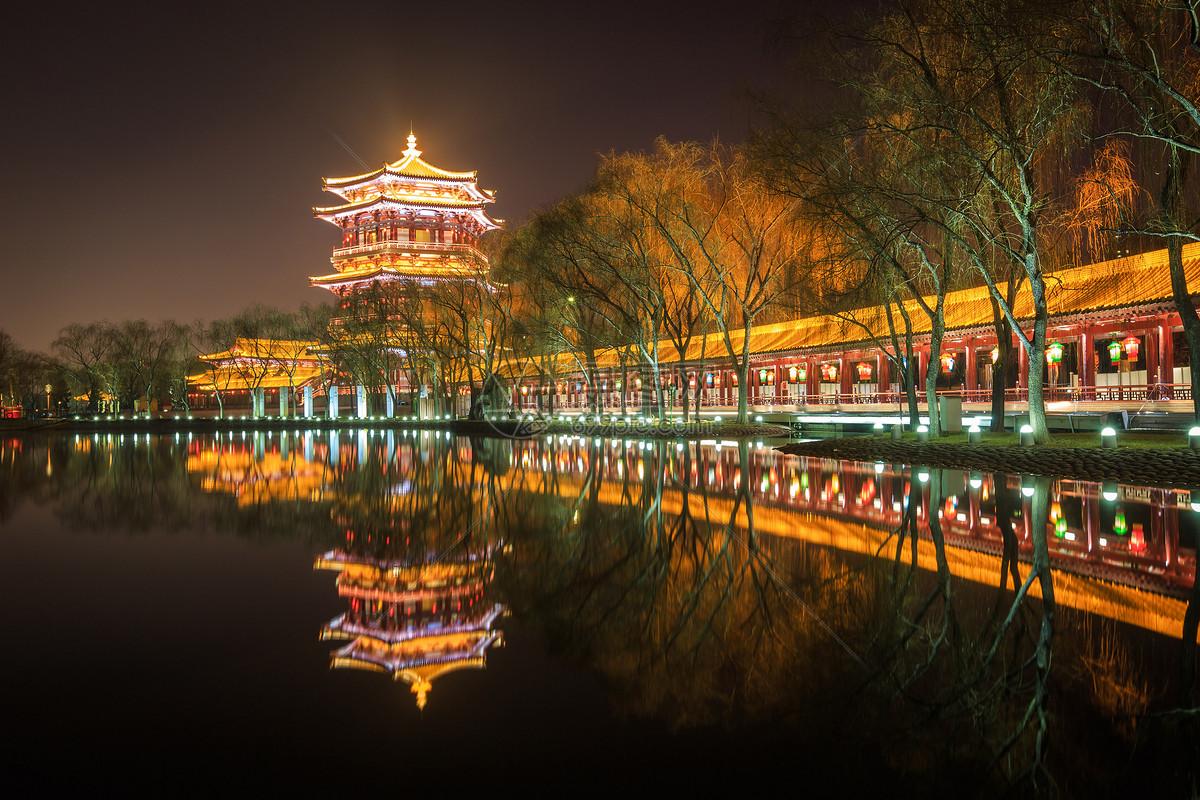
Top5.Datang Furong Garden
The Datang Furong Garden, a national 5A-level scenic area, is located in the Qujiang New Area in the southern part of Xi'an, facing the Giant Wild Goose Pagoda from afar. It covers an area of 998 mu, including a water area of 300 mu, a green area of 440 mu, and a building area of nearly 100,000 square meters. The overall planning and architectural design of the garden's buildings were undertaken by Mr. Zhang Jinqiu, an academician of the Chinese Academy of Engineering, and the landscape design was carried out by Mr. Akiyama Hiroshi, a Japanese garden master. It is a large-scale cultural theme site park that comprehensively showcases the grandeur of the prosperous Tang Dynasty. Since its official opening on April 11, 2005 (the third day of the third lunar month), it has been committed to creating a high - quality and high - standard brand tourist attraction. The Datang Furong Garden aims to be "a garden of history, a garden of spirit, a garden of nature, a garden of humanities, and a garden of art". It has specially invited a panel of experts composed of more than a dozen experts in Tang history, Tang poetry, Tang paintings, and Tang architecture, including doctoral supervisors, researchers, and tourism experts from the Chinese Society for the Study of Tang Dynasty Literature. This expert group has re - excavated and collated the historical and cultural content of the Datang Furong Garden, and re - planned and positioned the entire garden's landscape. Fourteen landscape and cultural areas have been delineated, including the Imperial Culture Area, the Women's Culture Area, the Poetry Culture Area, the Imperial Examination Culture Area, the Tea Culture Area, the Song and Dance Culture Area, the Food Culture Area, the Folk Culture Area, the Diplomatic Culture Area, the Buddhist Culture Area, the Taoist Culture Area, the Children's Amusement Area, the Entrance Landscape Culture Area, and the Water Show Performance Area, comprehensively reproducing the glorious civilization of the prosperous Tang Dynasty. There are pavilions, towers, engraved corridors, and painted buildings in the garden. There are more than twenty scenic spots, such as the Ziyun Tower, the Ladies' Hall, the Lu Yu Tea House, the Apricot Garden, the Rosy Clouds Corridor, the Qujiang River Drifting Wine Cups, the Fair Ladies' Parade, the Gorge of Tang Poetry, and the Dogwood Terrace, which collectively display the magnificent spiritual outlook and the incomparably splendid and diverse culture and art of the Tang Dynasty. It is known as a tourist destination that "amazes the Chinese people and astonishes the world". The park features a large - scale water dance and light show called "Dreaming of the Tang Dynasty", where visitors can take a boat ride around the park to enter a dreamy realm. The large - scale super - dimensional situational dance drama "Dreaming Back to the Tang Dynasty" is magnificent and dream - like. The Tang Dynasty court banquet music performance "Drums" interprets the intangible cultural heritage of the Dongcang Drum Music. There are also high - quality cultural and tourism event brands and projects such as the Spring Festival Grand Gala, the Shangsi Festival, and the Qujiang Flower and Moon Banquet. With multiple free and wonderful performances at scenic spots every day, it is an enthusiastic invitation from the Tang royal family to tourists, allowing them to experience the sacred and grand royal culture in a shocking way. As a high - quality, distinctive, and culturally rich theme site park, the Datang Furong Garden is a cultural window through which Xi'an showcases the ancient historical heritage of Chang'an and the prosperous Tang Dynasty to the world, and it is also a cultural gateway that attracts the world to understand China.
- Historical culture
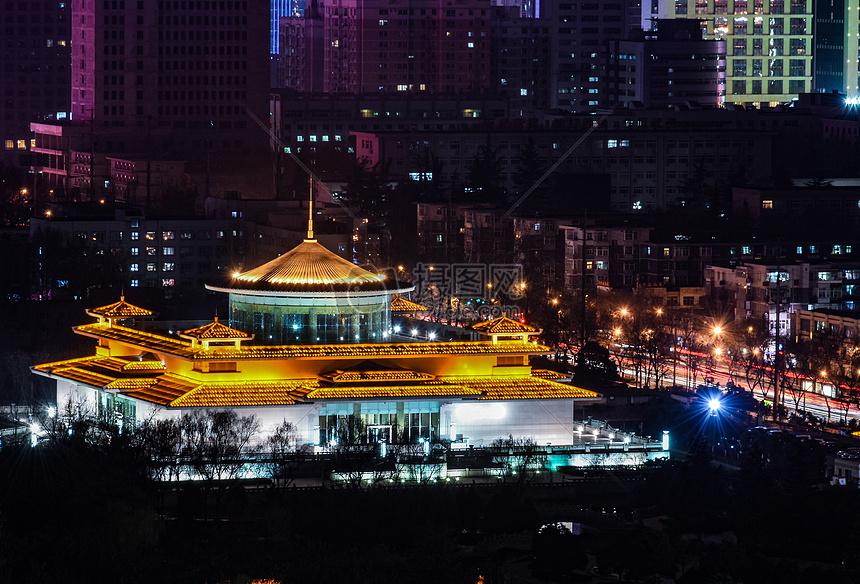
Top6.Shaanxi History Museum
Historical Background: Shaanxi History Museum is located on the northwest side of the Giant Wild Goose Pagoda in Xi'an and is one of the iconic scenic spots in Xi'an. The museum was planned in 1983, construction started in the summer of 1986, and it was officially completed and opened on June 20, 1991, and named Shaanxi History Museum. In 2016, Shaanxi History Museum was selected into the "Architectural Heritages of the 20th Century in China" by the Chinese Society of Cultural Relics and the Architectural Society of China. Museum Features: Shaanxi History Museum is a large - scale modern museum. Its completion marks that the cause of Chinese museums has entered a new stage of development. The museum building is a Tang - style architectural complex with a "central hall and lofty pavilions at the four corners". The main and secondary buildings are in an orderly manner, with a proper layout of high and low, and a solemn momentum, integrating national traditions, local characteristics and the spirit of the times. The museum covers an area of 65,000 square meters and houses more than 380,000 pieces of cultural relics, ranging from simple stone tools used in the initial stage of ancient humans to various utensils in social life before 1840, with a time span of more than one million years. The cultural relics are not only large in quantity and complete in variety but also high in quality and wide in value. The collection in the museum is a dazzling array of fine works. It is an art palace displaying Shaanxi's historical culture and ancient Chinese civilization and is known as the "Pearl of the Ancient Capital and the Treasure House of the Chinese Nation". There are many rare treasures in the museum, such as bronzes from the Shang and Zhou dynasties, pottery figurines of all dynasties, gold and silverware from the Han and Tang dynasties, and murals from Tang tombs. Most of them are treasures from the prosperous Han and Tang dynasties, and there are many fine works prohibited from being taken out of the country by the state. Collection Highlights: There are three exhibition halls in the center of the museum. The first exhibition hall displays cultural relics from the pre - historic civilization of the Lantian ape - man 1.15 million years ago to the Qin Dynasty; the second exhibition hall shows cultural relics from the Han, Wei, Jin, and Southern and Northern dynasties; the third exhibition hall mainly features cultural relics from the prosperous Tang Dynasty. Each exhibition hall has its own most precious artifact. Special exhibition halls are set up on both the east and west sides of the central hall. On the west side, there is the "Special Exhibition of Treasures from the Tang Dynasty (Treasure Hall, cultural relics unearthed from Hejiacun)", where many fine gold and silverware pieces from the prosperous Tang Dynasty have been moved for exhibition. On the east side, there is the "Special Exhibition of Tang Tomb Murals", displaying a batch of genuine Tang tomb murals. The Yu Ding: The Yu [yú] Ding is placed in the first exhibition hall at the entrance of the museum and can be regarded as the most precious artifact of the first exhibition hall. What is placed here is a replica, and the genuine one is kept in the warehouse. Inscriptions on the outer wall: The inscriptions "All under heaven belongs to the king; all the people on the land are the king's subjects" reflect the land - ownership system in the Western Zhou Dynasty. There are a total of four lines and 28 characters of inscriptions cast on the inner wall of the Yu Ding. The general meaning is that in the early August of a certain year, Queen Jiang took back the land originally granted to Shi Lu and re - granted it to Yu, and Yu made this ding to commemorate it. The Imperial Seal of the Han Dynasty's Queen: One of the treasures worth seeing in the second exhibition hall is this separately displayed imperial seal of a Han - dynasty queen. The whole seal is made of white mutton - fat jade from Hetian in Xinjiang, with a chi - tiger carved on it, symbolizing royal power. The Tri - colored Glazed Camel with Musicians: This world - famous tri - colored glazed camel with musicians is located in the third exhibition hall of Shaanxi History Museum. Its overall appearance and colors are well - preserved. There are seven men sitting on the camel's back, holding different musical instruments. Among them, the figure holding the clappers is listening intently, as if intoxicated by the wonderful music. The woman in the middle is performing, and the camel is opening its big mouth and looking up at the sky, as if singing along with its master. The Gold - inlaid Agate Cup with an Animal Head: This cultural relic in the "Special Exhibition of Treasures from the Tang Dynasty" is one of the first batch of 64 national treasures listed by the State Administration of Cultural Heritage that are never allowed to be exhibited abroad. In addition, there are also many other treasures such as the Black - glazed Bowl with Oil - drop Patterns, the Celadon Pot with a Handle for Pouring Liquid Upside - down, the Gilt - bronze Incense Burner with Bamboo - joint Shape, and the Gold Bowl with Patterns of Mandarin Ducks and Lotus Petals.
- Historical culture
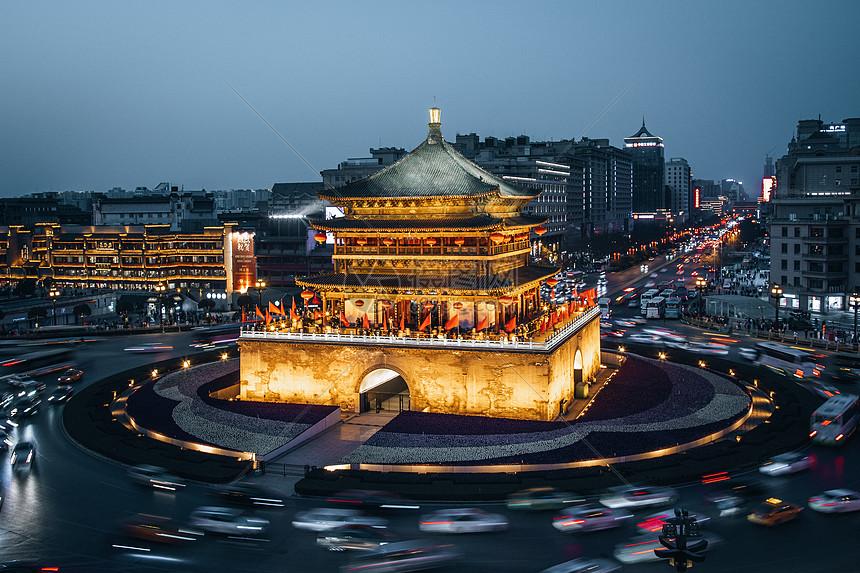
Top7.Xi'an Bell Tower
The Bell Tower in Xi'an is a relatively large and well - preserved bell tower in China. It was first built in the 17th year of the Hongwu reign of the Ming Dynasty (1384 AD). The Bell Tower is located in the center of Xi'an and is one of the landmarks of the ancient city. Centered around it, four main streets - East Street, South Street, West Street, and North Street - radiate out and connect with the east, south, west, and north gates of the Xi'an City Wall respectively. Xi'an's Drum Tower was originally on Guangji Street in the west. As the city center shifted eastward, in the 10th year of the Wanli reign of Emperor Shenzong of the Ming Dynasty (1582), the Bell Tower was moved to its current location, which is to the east of the Drum Tower. The Bell Tower represents a typical architectural style of the Ming Dynasty. The lower part is a square base made of brick and stone, and the top has a triple - eave pyramidal roof structure with four sides, covered with dark - green glazed tiles. The spire is wrapped in real gold foil. There are gateways about 6 meters high in the middle of each side of the base, and these gateways are interconnected. In the past, they were the intersection of the four main streets (East, South, West, and North Streets), and people and vehicles passed through them. Now, the gateways are closed, and there is a roundabout around the base, with an underground passage for pedestrians. The entrance to the Bell Tower is inside this underground passage, and there are spiral stairs leading to the tower. There is a replica of the "Jingyun Bell" inside the Bell Tower. The original bell was cast in the second year of the Jingyun reign of Emperor Ruizong of the Tang Dynasty (711 AD) and is now collected in the Xi'an Beilin Museum. Standing on the Bell Tower, one can see the four main streets (East, South, West, and North Streets) extending from it. Around the Bell Tower, there are bustling commercial areas in Xi'an and the Drum Tower not far away. When visiting the Bell Tower, tourists can also enjoy wonderful ancient - themed performances. There are 6 performances during the day, and the specific performance times can be found on the official website. Between the Bell Tower and the Drum Tower is the Bell and Drum Tower Square, which has a musical fountain.
- Historical culture
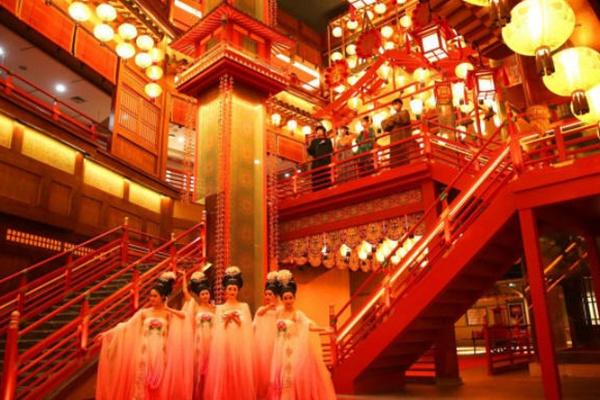
Top8.The Theme Block of the Twelve Hours in Chang'an
The Theme Block of The Longest Day in Chang'an takes the Tang Dynasty's urban culture as its origin, the IP of the online drama *The Longest Day in Chang'an* as its theme, and immersive experience as its core. It conducts comprehensive Tang - style packaging in areas such as architecture, soft furnishings, coins, characters, clothing, language, music, and stories. Meanwhile, centering around in - depth immersive story experience, it sets up supporting business formats such as catering, cultural and creative products, and performances. Overall, it creates an all - Tang urban cultural experience destination that integrates all - Tang space exploration, experience of the Tang - style urban life, theme - immersive interaction, Tang music and dance performances, and cultural socializing and relaxation.
- Historical culture
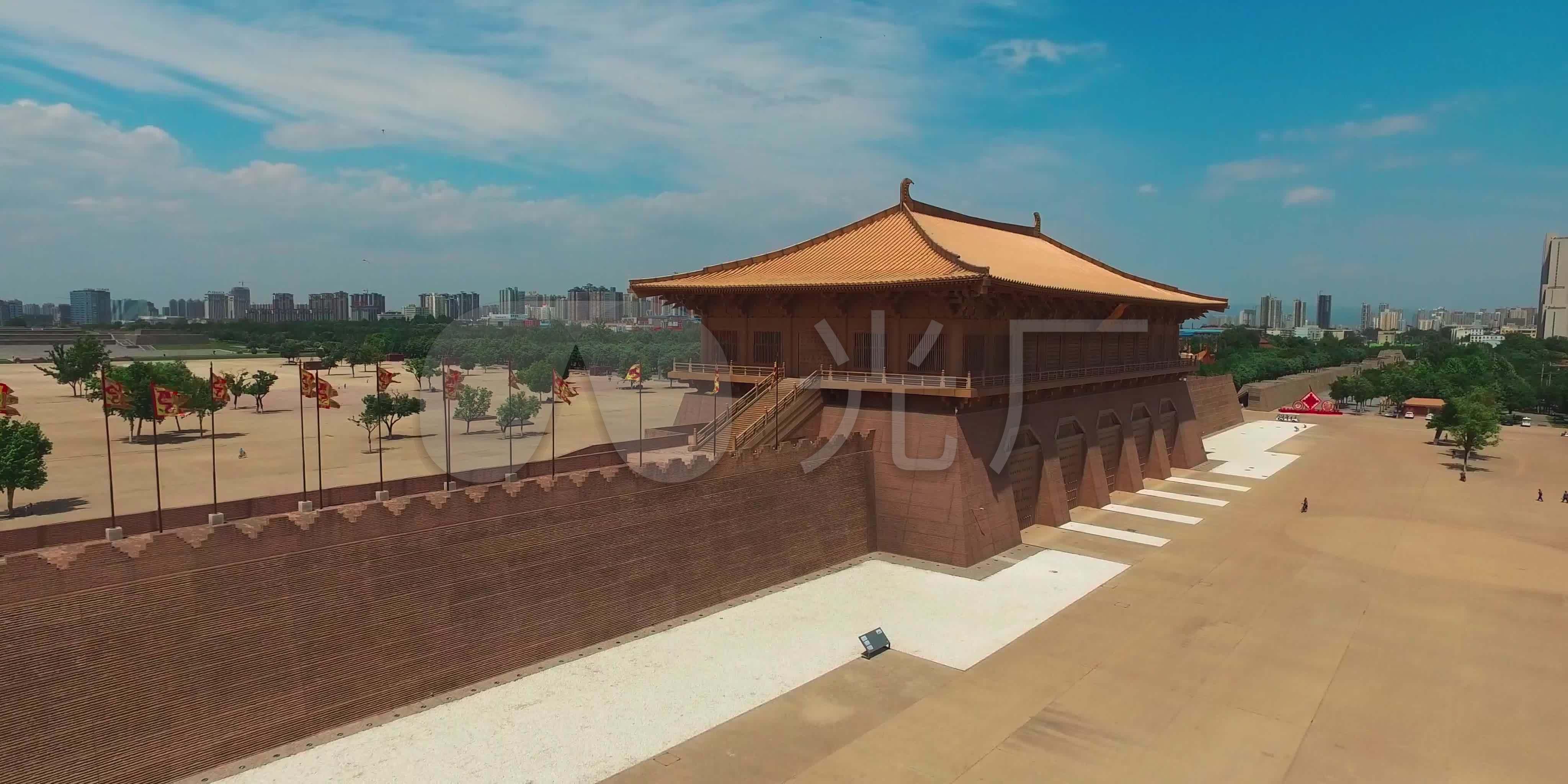
Top9.Daming Palace National Heritage Park
The Daming Palace was the principal imperial palace of the Tang Empire, serving as the political center and national symbol of the Tang Dynasty. It was the largest among the three main palaces in Chang'an, known as the "Three Inner Palaces" (Daming Palace, Taiji Palace, and Xingqing Palace), and was called the "Eastern Inner Palace." Since the reign of Emperor Gaozong of Tang, a total of 17 Tang emperors handled state affairs here for more than 240 years. The Daming Palace was the most magnificent palace complex of the Tang Empire and also the largest in area in the world at that time. In the poem "A Reply to Jia Sheren's Poem on the Early Court in the Daming Palace" by the great poet Wang Wei, the line "The palace gates open wide in the heavenly realm; Officials from all nations pay homage to the sovereign" symbolizes the prosperous scene of the Tang Dynasty, highlighting the dignity of the Tang Empire and presenting a grand and solemn occasion and the nobility of the emperor. The construction of the Daming Palace began in the eighth year of Zhenguan (634 AD) during the reign of Emperor Taizong of Tang. It covers an area of approximately 3.2 square kilometers. The entire palace area can be divided into two parts: the front court and the inner courtyard. The front court was mainly used for court meetings, while the inner courtyard was mainly for residence and banquets. The centers of the front court were the Hanyuan Hall (Outer Court), the Xuanzheng Hall (Middle Court), and the Zichen Hall (Inner Court). In the inner courtyard, there was the Taiye Pool and more than 30 other palaces, pavilions, and observation towers. The term "Daming" first appeared in the "Daming" section of "The Odes of the Grand Dynasty" in "The Book of Songs." According to the "Preface to Mao's Interpretation of the Book of Songs," it means: "King Wen had noble virtue, so Heaven commanded King Wu. King Wen and King Wu succeeded each other, and their noble virtue became more and more extensive day by day. Therefore, it is called Daming." Just as the name of the Weiyang Palace also comes from "The Book of Songs," the Daming Palace was named as a self - admonition, taking the diligence and wisdom of the Zhou kings as an example. There is also a strange legend about the origin of the Daming Palace. When the construction began, an ancient bronze magic mirror was unearthed from the construction site. Wei Zheng recognized it as the national - protecting treasure of Emperor Qin Shi Huang, which was used to eliminate dissidents and was called the "Qin Mirror." It is said that it could clearly show the internal organs of the human body. More importantly, it could also reveal the loyalty or treachery of the officials and the rise and fall of the national fortune. After the completion of the Daming Palace, the Qin Mirror was hung in the court to deter evil spirits, and later, the saying "a clear mirror hanging high" emerged. With the magic mirror guarding, it was a place full of righteousness and integrity, so it was called the Daming Palace. On March 4, 1961, the Daming Palace Site was announced by the State Council of the People's Republic of China as one of the first batch of national key cultural relics protection units. In 2010, Xi'an City established the Daming Palace National Heritage Park on the original site of the Daming Palace. On June 22, 2014, the Daming Palace Site, as one of the heritage sites in the "Silk Roads: the Routes Network of Chang'an - Tianshan Corridor," was successfully included in the "World Heritage List." On October 18, 2021, the Daming Palace Site was selected into the "Top 100 Archaeological Discoveries in the Past 100 Years." The Daming Palace in the Tang Dynasty was a magnificent building complex in Chang'an. The park is built on the site of the Daming Palace. Here, there are the foundation sites of palaces such as the Hanyuan Hall. Visitors can enjoy the restored miniature landscape of the Daming Palace. The scenic area has a south gate and an east gate. The south gate is the main entrance, and the tourist center is also located at the south gate. It is recommended that tourists enter the scenic area through the south gate. The heritage park is divided into two parts: a free - access area and a ticketed area. The ticketed area is the core area of the scenic spot, including the Danfeng Gate Site Museum, the Hanyuan Hall, the Xuanzheng Hall, the Zichen Hall sites, and the Daming Palace Site Museum. The Danfeng Gate was the main south gate of the Daming Palace. In front of it was the Danfeng Gate Street, which was 176 meters wide. North of the Danfeng Gate, there were the Hanyuan Hall, the Xuanzheng Hall, the Zichen Hall, the Penglai Hall, the Hanliang Hall, the Xuanwu Hall, etc., forming the north - south central axis. Most of the other buildings in the palace were also distributed along this axis. According to "Yonglu," in the Daming Palace, from the Danfeng Gate, there was the Hanyuan Hall, and further north was the Zichen Hall. The three buildings were built one after another from south to north, and all three were built on the mountain ridge. The front - court area occupied the highest part of the Longshou Mountain. After passing the front - court area, the terrain at the northern foot of the Longshou Mountain dropped rapidly, with a height difference of several meters. The Hanyuan Hall, the Xuanzheng Hall, and the Zichen Hall were the three major halls of the Daming Palace, and the Hanyuan Hall was the main hall. On the left and right sides of the Xuanzheng Hall were the Zhongshu and Menxia Departments, as well as the Hongwen and Hongshi Academies. On the east and west sides of the axis, there was a longitudinal street respectively, which was formed by opening side - gates on three transverse palace city walls. North of the Longshou Mountain was the rear courtyard, where the terrain was low - lying. The water of the Longshou Canal was diverted into the city to form a lake, namely the Taiye Pool. The emperor's sleeping palaces and auxiliary palaces were mostly concentrated on the high - ground of the Longshou Mountain in the southeast of the Taiye Pool. The places where the emperor handled state affairs and entertained officials in the rear courtyard were located on the high - ground of the Longshou Mountain on the southwest bank of the Taiye Pool. To the north of the Taiye Pool, where the terrain was broad and flat, some entertainment places and auxiliary landscapes of the Taiye Pool were set up, such as the Shicui Hall, the Horse - racing Tower, and the Cock - fighting Platform. The Linde Hall was probably built during the Linde era of Emperor Gaozong of Tang and was located on the high - ground west of the Taiye Pool in the northern part of the Daming Palace. As previously mentioned, there were more than 30 other palaces, pavilions, and observation towers here. Within the scenic area, tourists can view the foundation sites of the major halls and the outlines of the palaces presented in light - steel structures on the foundation sites. In the Daming Palace Site Museum, visitors can view the cultural relics unearthed from the site, such as imperial utensils and vessels. In the northeast corner of the museum, there is a restored miniature landscape of the Daming Palace in a 1:15 scale. The tallest miniature palace is about 2 meters high. You can "walk" on the streets in the landscape and immerse yourself in the Daming Palace of the prosperous Tang Dynasty. In the Danfeng Gate Site Museum near the south gate, the foundation sites of the gate towers of the Danfeng Gate are preserved. This was the largest city gate in Chinese history that could be verified. In the northwest of the Danfeng Gate, there is an archaeological exploration center (additional tickets or package tickets are required). Here, you can personally experience the excavation and restoration of cultural relics, which is especially suitable for children and adults interested in archaeological exploration.
- Historical culture

Top10.The Never-Sleeping City of the Tang Dynasty
The central axis landscape avenue of the Grand Tang Mall is a central sculpture landscape pedestrian street about 1,500 meters long, stretching across the north and south. On it are distributed nine groups of thematic group sculptures featuring prosperous emperors, historical figures, and heroic stories. They three - dimensionally present the status of the Tang Empire in fields such as religion, literature, art, and science and technology, and highlight the grandeur of a great nation. Relying on the Giant Wild Goose Pagoda, the Grand Tang Mall starts from the Xuanzang Square in the north, extends to the Tang City Wall Relics Park in the south, with Cien East Road on the east and Cien West Road on the west. It runs through three thematic squares, namely the Xuanzang Square, the Zhenguan Cultural Square, and the Kaiyuan Celebration Square. It has six Tang - style blocks and four cultural buildings, including the Xi'an Concert Hall, the Xi'an Grand Theatre, the Qujiang Cinema, and the Shaanxi Artists Gallery. At night, the Grand Tang Mall is brightly lit. The Tang - style ancient buildings in the light and shadow are resplendent and imposing, as if the prosperous Tang Dynasty has reappeared. Here, popular internet - based entertainment methods are gathered. It focuses on presenting a colorful, dreamy, and high - tech atmosphere. Using large - scale scene installations, it creates a fashionable and dynamic interactive experience museum, providing a popular photo - taking place for the young and trendy people. In the parent - child science and technology area, through scene image displays and on - site hands - on operations, children's imagination and creativity are inspired. By combining games with ability training and experience gains, it is a great place for parent - child outings.
- Urban exploration
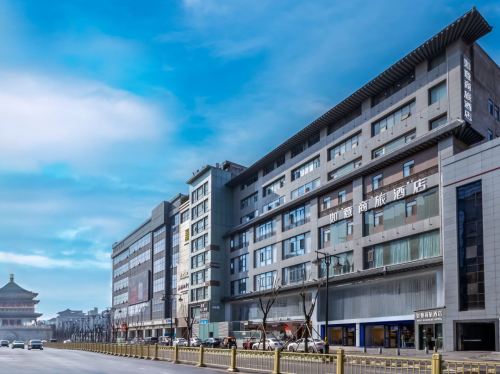
Top1.Ruyi Business Hotel (Xi'an Bell Tower Subway Station Store)
No. 349, East Avenue (330 meters on foot from Exit 6 of Bell Tower Subway Station)
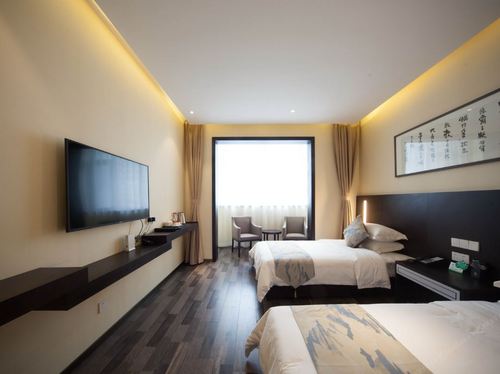
Top2.Jingmao Hotel (West Daming Palace Store)
No. 112, Weiyang Road (Southwest corner of Weiyang Overpass on the North Second Ring Road)
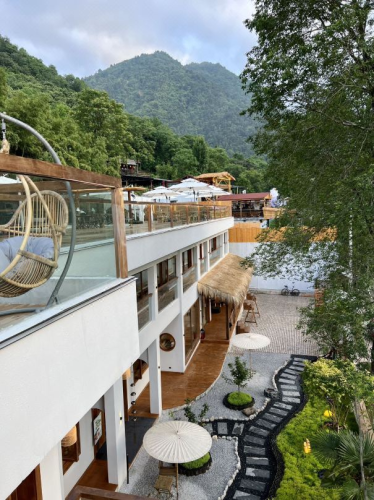
Top3.Cui Ridge Guesthouse
170 meters south of Taiyi Village Committee
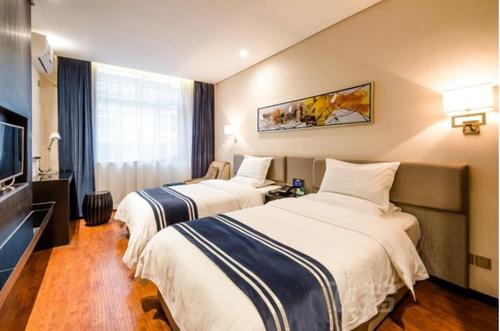
Top4.Meteorological Hotel (Beiguanzheng Street Branch)
Meteorological Building, No. 36, Beiguanzheng Street
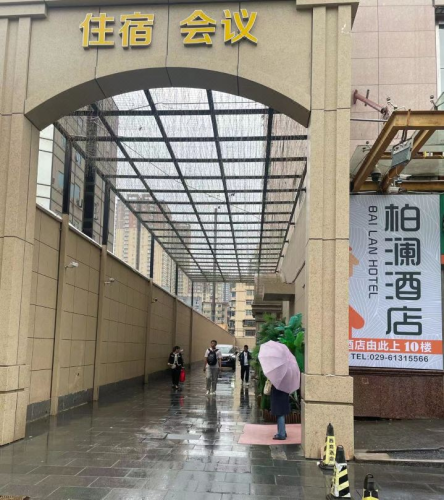
Top5.Bolan Hotel (Near Tonghuamen Subway Station, Xijing Hospital)
10th Floor, Northwest Jinhua Sweater Trade Building, No. 10, Changle West Road
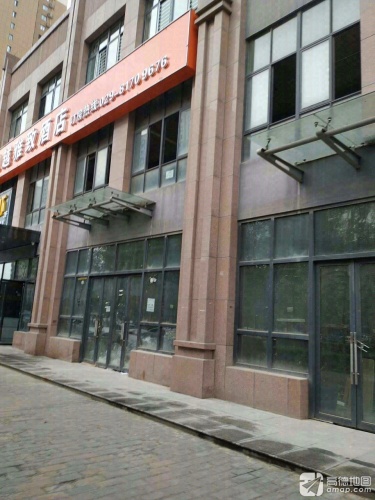
Top6.Diyue Elegant Hotel
300 meters east of the intersection of Qinhan Avenue and Yangguang Avenue, south of the road

Top7.All Seasons Hotel (Xi'an Caotangyi BYD Factory 2)
Lobby, 1st Floor, Building 7, Caotang Science and Technology Industrial Base, No. 2, Caotang Avenue
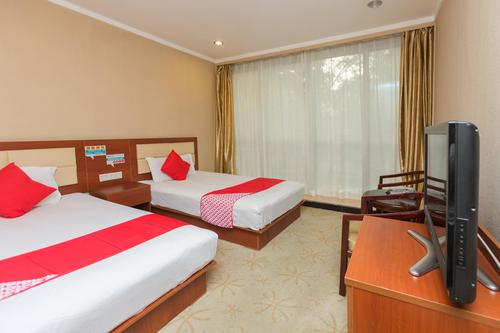
Top8.Haoting Business Hotel
No. 86, Changying East Road (300 meters east of the cross at Hujiamiao Station of Metro Line 3, south side of the road)
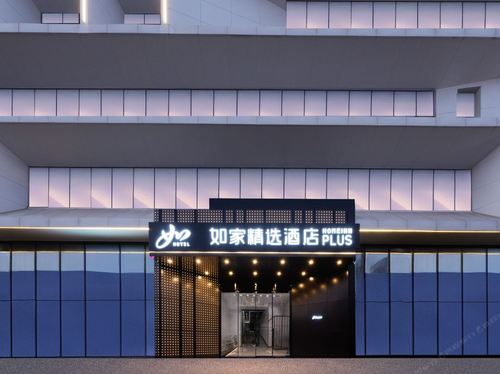
Top9.Home Inn Select Hotel (Xi'an West Avenue Store)
3rd Floor, Shop 01, Southwest of Yamei Innovation Science and Technology Park, No. 108, Shanglinyuan 4th Road
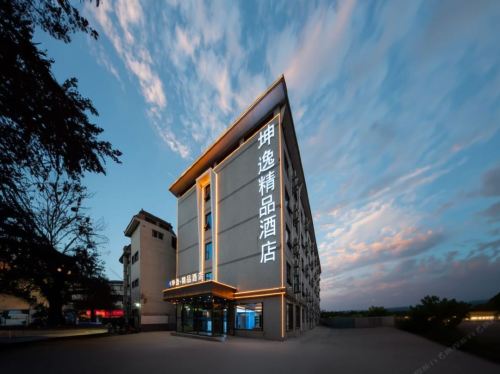
Top10.Kunyee Boutique Hotel (Ziwu Avenue Store, Chang'an University Town, Xi'an)
40 meters southeast of the intersection of Village Road 251 and Ziwu Avenue
